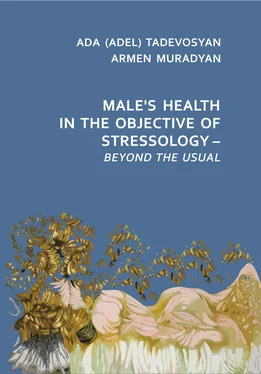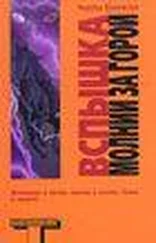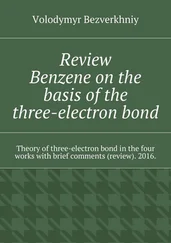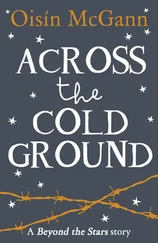But man is an amazing creature! He is not content with a life-long adaptation to the actually changing environment, the changing human environment and to his own self. With the development of consciousness an individual, and only he, as shown by many studies, while living his own life, is also permanently forming his own “subjective reality”, his own idea of the world of things, of other people and of his own status. Meanwhile, the latter category is associated with self-rating, varying from an overestimation of oneself, one’s capacities and capabilities, to their underestimation. The result is that the individual adapts not so much to the objective reality but to the so-called “psychic reality” built by himself as an integrative “product”, as a fundamental integrative formation of the perceived outside world, colored by personal experiences and personal estimates. As a result, a “semantic reality” is created, enriched and framed by thoughts, feelings, fantasies, anxieties and suspicions. In forming this reality a sizeable role belongs to the past events, imagination and perspectives, to say nothing of the unconscious predictions forming the guidelines.
The emerging mental reality is not the reality that is mostly identified with the outside world and regarded as “objective reality”. The mental reality, at close scrutiny, is a colored palette of diverse interpretations of the outside world by different people, for each of them “his own reality is the most objective”, the one he is being adapted to. The mental reality is constructed through personal experience enabling perception of current life. E.g., a person gone through a traumatic situation, retains this experience, often perceives this world acting in it at present and in the future in the light of a traumatic reality of the past. It is this person who crosses the threshold of the doctor’s office, having his own idea of the disease, the formulated internal picture of the disease. The mental reality can be regarded as synonymous to the inner and subjective reality. All three terms – mental, inner, and subjective realities are designed to limit the subjective experience of an individual from the world of physical objects. Some theorists attempt to introduce certain corrections to delimit the mental and the inner reality.
They correlate the mental reality with the inner sources of subjective experience that is with unconscious fantasies and images, for which the perceptions incoming from the outside world are an outside source of subjective experience. With regard to the term “inner reality”, they understand it as a most general phenomenon reflecting a total subjective experience based upon integrative images of the perceived outside world.
Similar to the inner reality, which is not a “pure” product of imagination, the outside reality has its complex structure. The outside reality is reducible to two basic manifestations: “the actual” – objectively verifiable and confirmed by the scientific cognition of the world, and “the artificial” – the intersubjectively generally accepted “conventional” consisting of the world of words, myths, traditions, interpersonal and collective forms of behavior. The abovementioned shows the variety of factors and situations that can cause a state of deadaptation, anxiety, stress in modern man, and as a consequence, the improvement and complication of the adaptation system itself.
In the outside world structure the major portion falls on the world of people, so that task number one in human everyday life becomes man’s ability to adapt to another person, to other people who are carriers of individual psychosocial “Egos” that are present from the very beginning of life and to the last breath. “Man is a tangle of interrelationships” is an ancient philosophical aphorism. And this kind of adaptation is a super task and super goal for any person. K. Cherry (1972) believes that every act of communication between people, each new perception of another person adds something to the experience and improves the adaptability. Communication with people of one’s own kind is already a subsystem of social contacts, leading to an expansion of mental adaptation which in fact becomes psychosocial adaptation. L. Feuerbach (1955) noted that the individual “as something isolated” could not comprise the human essence in himself “either as a moral being, or as a thinking entity”; the human essence is “evident only in communication, in the unity of man with man…”. Thus, a crucial adaptation to be performed by man is adaptation to the social structure and his participation in building it up (Bernfeld, 1931). This type can be attributed to the fourth form of adaptation. The SPA is characterized by the multidimensional self-organizing subsystems, which provide greater freedom and variability in the choice of adaptation.
The mechanisms of the SBA and SPA, which determine the vital activity of a person, are extremely complex structures containing multiple subsystems, interconnected and interdependent. N. P. Bekhtereva regarded the increasing number of flexible links in the control system of mental activity as the main principle of complicating the brain systems. She assumed that the mental activity was supported by the cortical-subcortical structural-functional system with links of varying degrees of rigidity. Human adaptive capabilities have the widest range of flexible links, which when interacting with the environment allow to keep “essential variables” within the physiological boundaries. This is reflected in the”interfunctional” reorganization of the entire structure of mental activity in the process of ontogenesis.
The system adaptive approach enables to present a complete picture of man in his onto- and phylogenetic development; in health and illness; a picture stipulated by psychosomatic interrelations between the component paradigms – the biological and the psychosocial.
A historical development of human consists in the fact that today we have a person as a conscious volitional trinity (biological, social and mental), for whom sense formation (meaning formation) has become a leading need. Sense formation is the main function of the brain distinguishing a person from all living beings, and it is this ability to attach personal significance to environmental signals that makes each person unique and unrepeatable . It is sense formation that underlies many conscious and unconscious psychological defenses that make up the core of the SPA.
Example. They say that “Rafael Santi was driven mad with love towards a model for the image of Psyche. Once he, a dreamy young man was walking in the park thinking about finding a model for his canvas “Cupid and Psyche”. Suddenly he noticed a beautiful girl resting in the shade. Such pure features, such angelic face he had never seen! “Psyche” looked with interest at Rafael blinded by her beauty. She was 17 years old. Her name was Margarita Luti. Rafael immediately invited her to become model for the image of Psyche. Painter offered her a gold ring for ten kisses. Maid graciously agreed. Rafael lost his head with passion. Rafael went mad with beautiful “Fornarina” (translated from Italian means “baker”). Her delicate face with expressive brown eyes, silky skin and lush shoulders forced him to get off the breath. But that was not the Fornarina, whom worshiped Rafael. The young mistress of Raphael, though living with him, twisted love affairs with wealthy Romans right and left, often returning home at dawn. What about Rafael Santi? He did his job – he painted, and his paintings have become part of the golden fund of world art. The beauty with innocent charm, that struck the painter’s heart, became a common courtesan. Rafael went crazy with countless betrayals of Margarita but in work continued to depict the ideal he “was looking for Psyche”. The most famous of his creations became written in the years 1512–1513 “Sistine Madonna.” Flying in the clouds the Virgin with child still touches deeply. The model for the image of Mary became the same Margarita Luti. The artist gave her face an expression that he would like to see and “saw”: a mother’s love, the fear of the loss of a child, tenderness. He loved and painted the one whom he sought, whom he loved and by virtue of whom created his works. He lived in his world woven out of values, desires and symbols. Suffering from reality, he immersed into work and came back to reality again. Rafael suffered unspeakably, like any addict, splashing his hidden feelings on canvas or wet plaster. Perhaps his work would not be so heartfelt, if his life with Fornarina evolved happily.
Читать дальше












